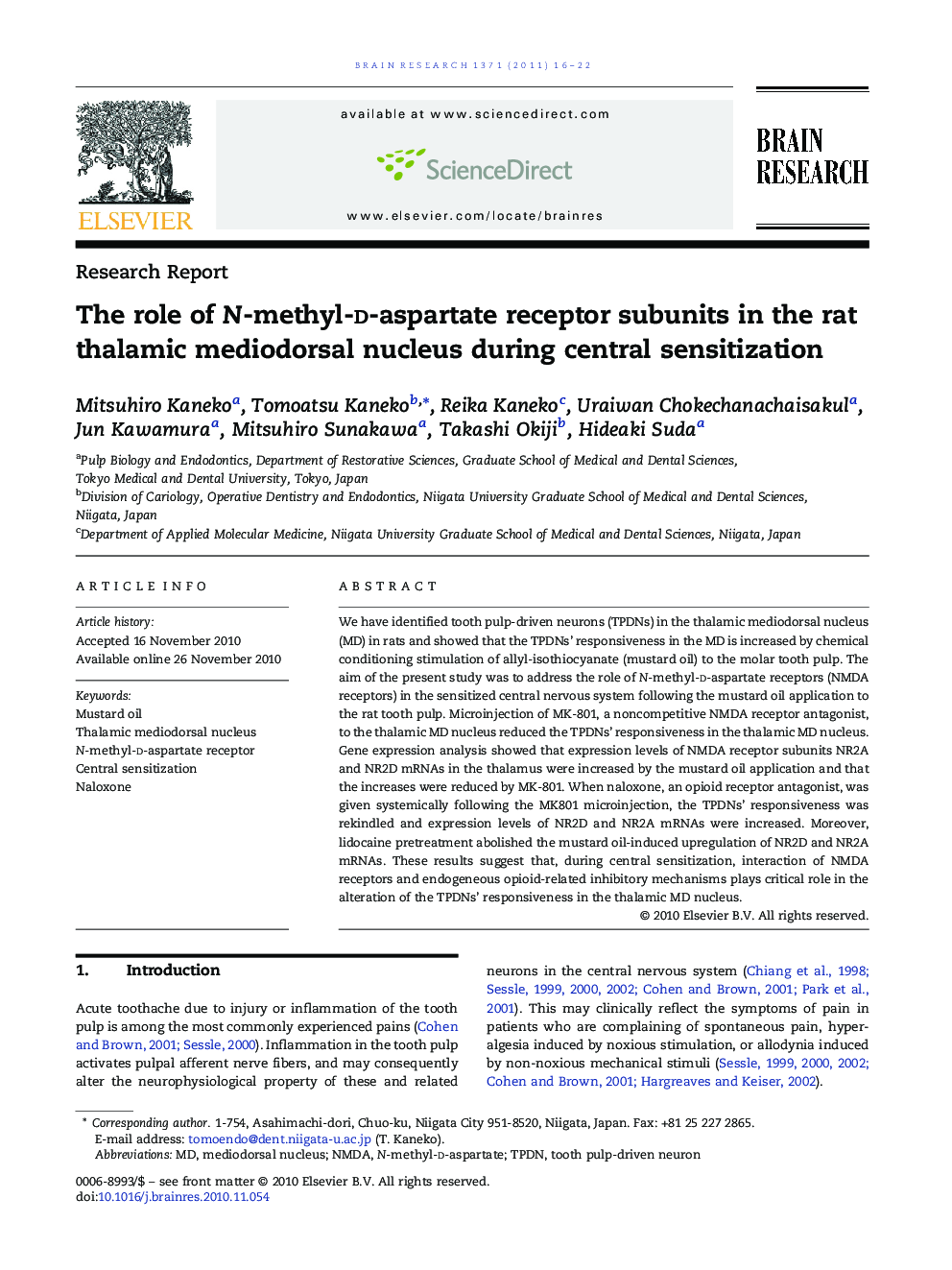| Article ID | Journal | Published Year | Pages | File Type |
|---|---|---|---|---|
| 6265124 | Brain Research | 2011 | 7 Pages |
We have identified tooth pulp-driven neurons (TPDNs) in the thalamic mediodorsal nucleus (MD) in rats and showed that the TPDNs' responsiveness in the MD is increased by chemical conditioning stimulation of allyl-isothiocyanate (mustard oil) to the molar tooth pulp. The aim of the present study was to address the role of N-methyl-d-aspartate receptors (NMDA receptors) in the sensitized central nervous system following the mustard oil application to the rat tooth pulp. Microinjection of MK-801, a noncompetitive NMDA receptor antagonist, to the thalamic MD nucleus reduced the TPDNs' responsiveness in the thalamic MD nucleus. Gene expression analysis showed that expression levels of NMDA receptor subunits NR2A and NR2D mRNAs in the thalamus were increased by the mustard oil application and that the increases were reduced by MK-801. When naloxone, an opioid receptor antagonist, was given systemically following the MK801 microinjection, the TPDNs' responsiveness was rekindled and expression levels of NR2D and NR2A mRNAs were increased. Moreover, lidocaine pretreatment abolished the mustard oil-induced upregulation of NR2D and NR2A mRNAs. These results suggest that, during central sensitization, interaction of NMDA receptors and endogeneous opioid-related inhibitory mechanisms plays critical role in the alteration of the TPDNs' responsiveness in the thalamic MD nucleus.
Research highlights⺠NR2A and NR2D mRNAs in the contralateral thalamus show an increase by the dental pulp inflammation. ⺠NR2A and NR2D mRNAs increased by the pulp inflammation are reduced by MK-801 application. ⺠NR2A and NR2D mRNAs in the thalamus shows an increase naloxone application following the MK801 application. ⺠There is some interaction between NMDA receptors and endogeneous opioid-related inhibitory mechanisms in the thalamus.
